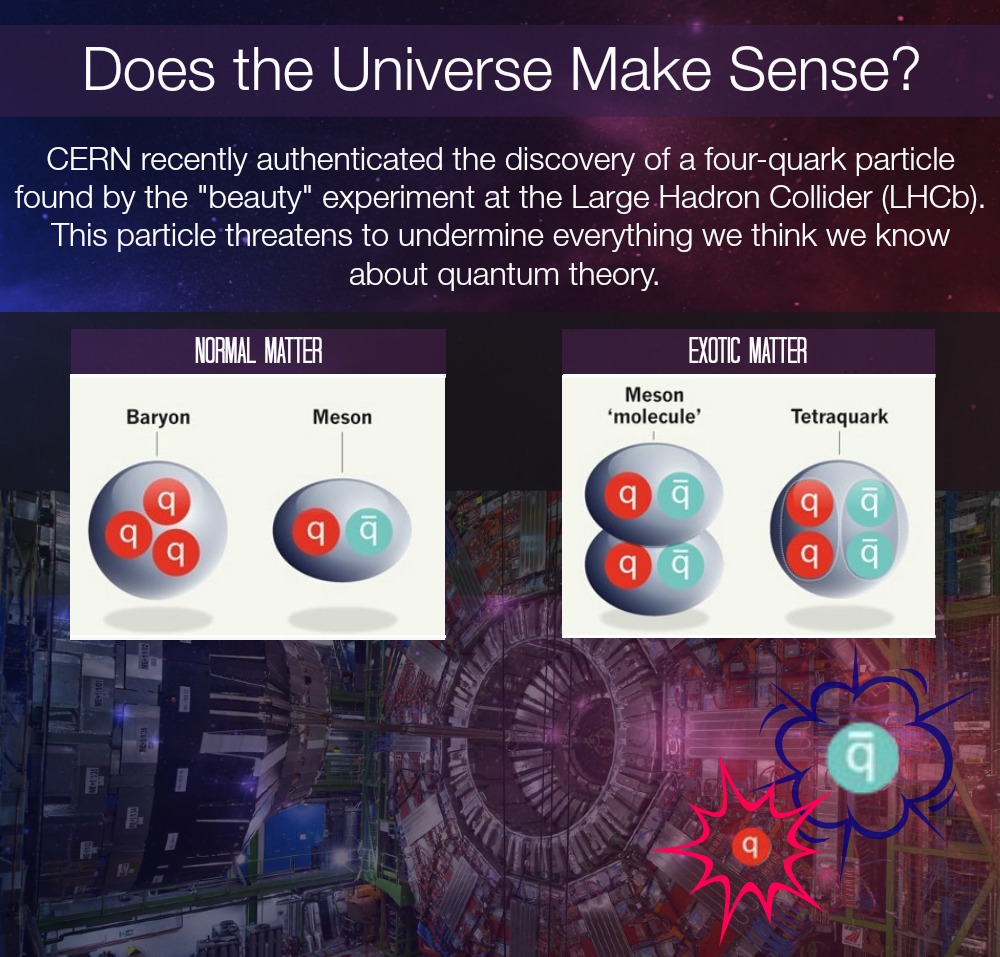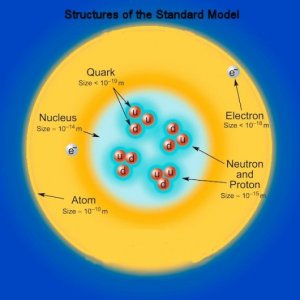

In 2013, scientists announced the discovery of Zc(3900): the first confirmed particle made of four quarks. Ultimately, quarks – other than being part of our namesake – are the infinitesimally small building blocks of most of the matter in the universe. Previously, we had no models to describe this kind of particle, so this new discovery was kind of a big deal.
Since the initial announcement in 2013, the BESIII collaboration – the team responsible for the find – has made “a rapid string of related discoveries” on the topic of four-quark particles. In fact, it seems that physicists are on the verge of having to create a new classification system to explain how these exotic particles fit into the equation. Especially now that the findings have been confirmed.
This will likely require a lot of work. You see, quarks have long been known to pair together in groups of twos and threes. When we have two quark particles, they are known as “mesons,” and three quark particles are known as “baryons.” You are probably rather familiar with the latter (even if you don’t realize it), as baryons make up both protons and neutrons, the building blocks that constitute every atom in your body and everything else around you; hence, why this discovery is of so much importance.
Today, we wanted to revisit some of the implications of these new four quark particles.
DIGGING DEEPER:
Ultimately, this is a particle that may have existed in the very first moments after the Big Bang, when the universe was a hot, orderless place. Thus, deciphering key details of the discovery could tell us invaluable things about those earliest moments in the universe’s history. Moreover, currently, no precise theoretical model exist that provide an accurate description of the newly discovered family of particles. So although the theoretical picture still needs to be finalized, more and more evidence is cropping up that suggests that we are witnessing new forms of matter. And this means that we will need to tweak our classification system a bit in order to include the new discoveries.
But what is the likelihood that this is all just a fluke? Some great error? Well, with 160 of these Zc(3900) particles confirmed, the scientists assert that the chance that their results are nothing more than a statistical fluke is less than 1 in 3.5 million.
To offer a little more background on this; nucleons (the stuff that makes up a nucleus, such as protons and neutrons) consist of a tumultuous sea of interacting particles. In a proton, you have 2 up quarks and 1 down quark (neutron has the opposite); but in both nucleons you also have lots of additional quark/antiquark pairs, tons of gluons, even a few strange quarks. But we have never seen any evidence of these four quark particles (or “tetraquarks”).

So we have a less-than-perfect model of quark particles, and since (as previously mentioned) they make up matter, an accurate model has broad reaching implications on our understanding of the universe.
Ultimately, this discovery is going to overthrow everything we know about the universe; it is not going to topple the standard model. However, it does force one to stop and consider what other discoveries are waiting for us on the horizon.
Researchers are expected to run decay experiments over the course of this year to determine its nature with more precision.
To sum: Frederick Harris, spokesman for the BESIII experiment, states
“Using decays of the Y(4260), a family of four-quark objects has begun to appear. While the theoretical picture remains to be finalized, more and more clues are suggesting that we are witnessing new forms of matter. And while a new ‘zoo’ of mysterious particles is emerging, it seems a new classification system may soon be at hand to understand it.”
[Reference: University of Hawaii, Mānoa]